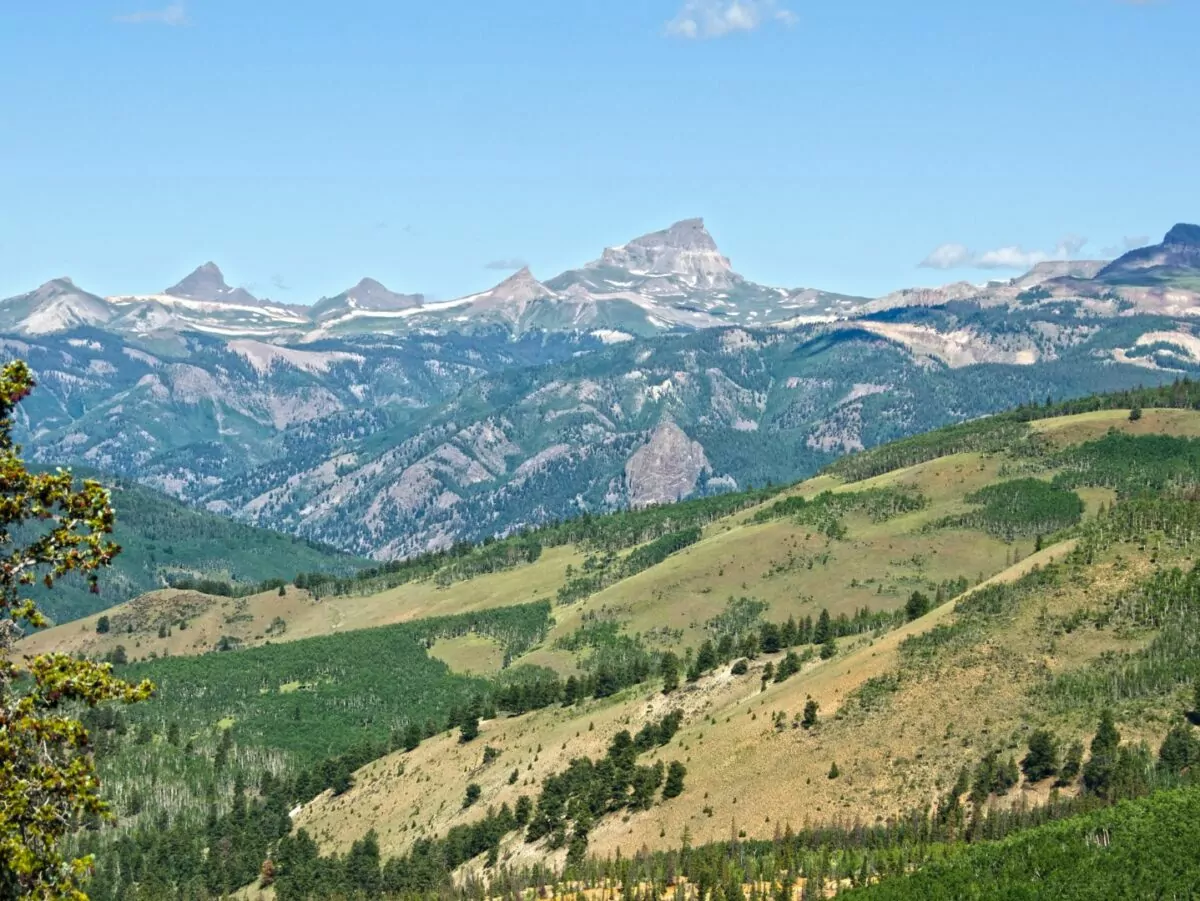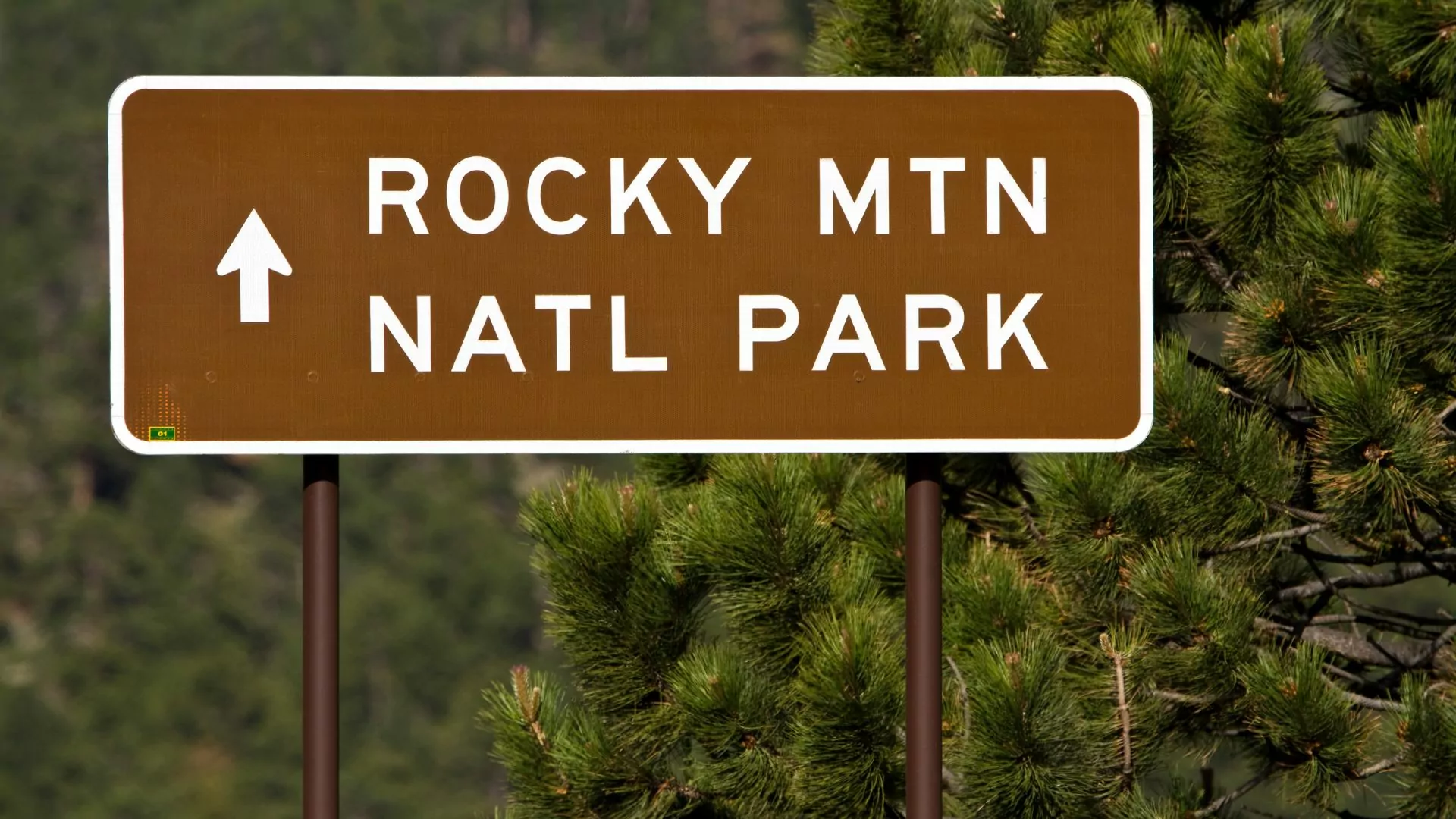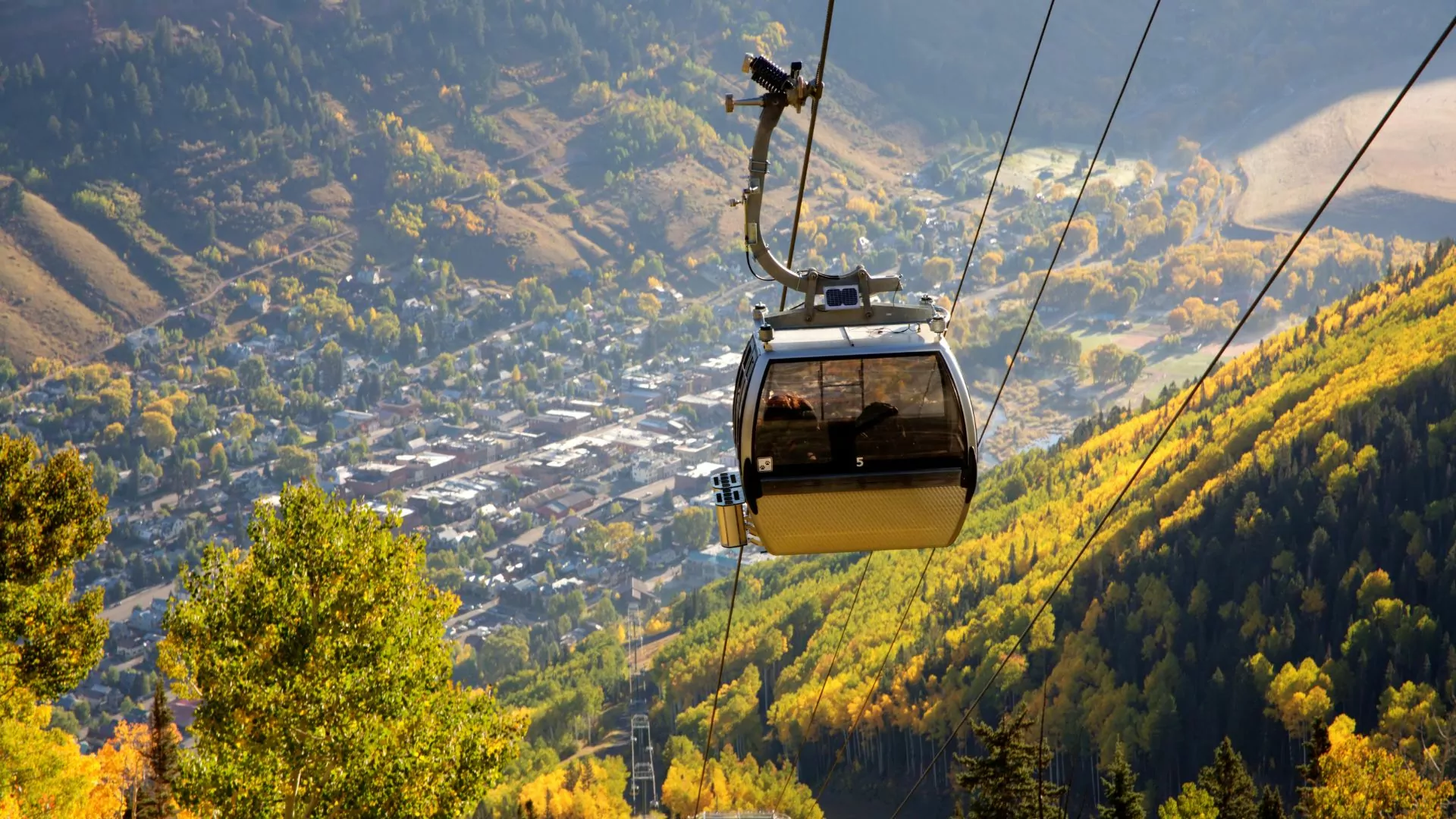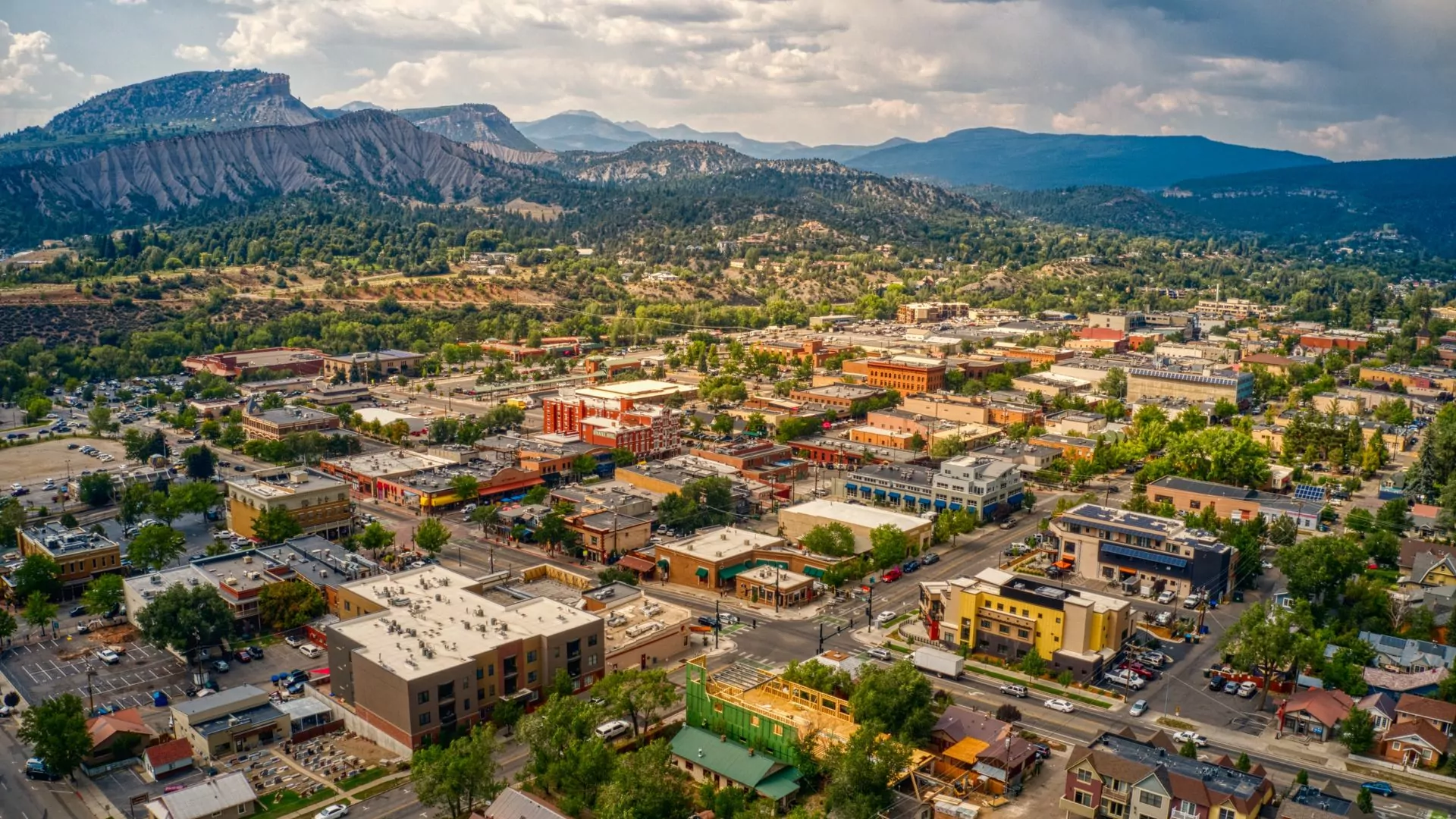Exploring the Western Rockies

When most people think of Colorado, Denver and the front range mountains or ski resorts come to mind. Most people don’t realize there is so much more to the state merely two hours away from the Denver Airport. This area is known as the Western Rockies or the Western Slope.
First, a little geography lesson. The main mountain range running north and south in Colorado is known as the Rocky Mountains. The Front Range in Colorado consists of large metropolitan cities like Denver and Boulder along with the first line of mountains including 14,000ft peaks like Longs Peak and Pikes Peak. The Western Rockies is the lesser known wonderland of the state which encompasses charming mountain towns, towering mountain tops and a surprising wine country.
Exploring the Western Rockies takes you off the beaten path and into the thin air.
The Tallest Mountain on the West Side
If peak bagging is on your to-do list, trekking up the 14,308ft Uncompahgre Peak presents a worthy challenge. Uncompahgre Peak is located in the western slope in the San Juan Mountains and is a Ute word loosely meaning “dirty water.” The hike to the top includes 3,000ft of elevation gain and 7.5 miles roundtrip with considerable rockfall and route finding. A more mellow option is to choose a hike in Uncompahgre Wilderness area that leads to a waterfall or follows a gulch.
Estes Park vs. Grand Lake
One of the stunning gems of Colorado is Rocky Mountain National Park. Even though both are amazing destinations, deciding between the gateway towns of Estes Park and Grand Lake may determine your Rocky Mountain National Park experience. Estes Park is the well-known and often touristy Eastern gateway to RMNP. It has more services and amenities than the quieter Western entrance. The streets are lined with t-shirt shops and candy stores, yet there is still a quaint chateau feel to it, especially if you step off into the more peaceful side streets or wooded trails.
Estes Park also offers a variety of activities and places of historical significance. White water rafting, horseback riding, and touring on E-bikes are just a few activities you can do when you’re not in the National Park. A fun half-day excursion is to take the aerial tram up to the top of Prospect Mountain or take a tour of the haunted Stanley Hotel, the inspiration for Steven King’s famous thriller The Shining.  Approaching the park from the more secluded Western gateway of Grand Lake, visitors can instead access the lesser known and equally stunning Western Rockies. Just ten minutes West of the park, the gateway town of Grand Lake nestles up on the shore of the largest natural lake of Colorado.
Approaching the park from the more secluded Western gateway of Grand Lake, visitors can instead access the lesser known and equally stunning Western Rockies. Just ten minutes West of the park, the gateway town of Grand Lake nestles up on the shore of the largest natural lake of Colorado.
In contrast to the bustling scene of Estes Park, Grand Lake offers a slower pace and less crowds. This town is the perfect jumping off point for outdoorsy activities. You can fish in the lake, hike in the nearby Kawuneeche Valley, or watch for moose in the meadows.
Both towns are beautiful and serve as great base-camps to enjoy the majestic Rocky Mountain National Park.
Towns of the Western Rockies
From smaller mountain towns to high desert metropolises to wine country, you won’t be disappointed with time spent in these Western Rockies towns.
Telluride
Ski resort in the winter and adventure playground in the summer, Telluride is an all-season destination on the Western Slope. One aspect that makes Telluride different from the other resorts is that the ski resort gondolas double as a public transportation system and are free for to use. Bikers and hikers can take the gondola up to 10,500ft to explore the mountain trails.The backdrop of this town are 14,000ft jagged mountain peaks.
There are countless trails to hike and many are accessible directly from town. At the intersection of Uncompahgre National Forest, Mt Sneffels Wilderness Area and San Juan National Forest, there are hundreds of miles of trails ranging from technical mountaineering, to strolling along a meandering creek through tranquil meadows and to waterfalls.
Palisades
Not many people are aware that Colorado has its very own wine country showing off its full-bodied Cabernet Franc and crisp Chardonnay. Palisade, Colorado boasts more than 80 wineries and includes two American Viticulture Areas. Palisade is located along the Colorado River and is bordered by the Rocky Mountains to the East and Grand Junction to the West, just south of the I-70.
You can make this a quick stop by visiting one or two wineries in an afternoon or you could spend a whole weekend touring vineyards and doing tastings. Biking is a great way to navigate the fruit and wine loops which are between 5 and 25 miles long. Not only are there wineries, but you can also sample jam and buy fresh fruit at the many orchards along the way. The fruit loop makes for a delicious weekend getaway!
Durango
Situated in the Southwest corner of the state far from the human and vehicle traffic of I-70, is the city of Durango; an example of the Wild West still alive in the United States today. What’s more western than silver mining ghost towns, train rides through the mountains, and ranches galore?
Having Fort Lewis College on the hill overlooking the city pumps life and vibrance into Durango’s downtown scene. The historic city boasts fantastic dining along and divey cowboy bars alike. Main Street can be seen by bike or by foot and has views of the mountains around every corner. Access to the Western Rockies is endless from this starting point.
Two hours to the East is the Ski Resort Wolf Creek, to the North is the mining town Silverton, and to the West is Mesa Verde National Park. You can raft on the Animas River, ski at Purgatory, or hike into the high country to view pristine alpine lakes. Thrill seekers, foodies, and history buffs are all drawn to this magical city.
Getting There
Getting to the destinations listed above is not always as simple as “fly to Denver and drive,” because some places like Durango are actually more accessible from the airports of neighboring states. Colorado has a decent public bus system called the Bustang, so if you want to take advantage of this mode of transport be sure to research departure times and bus routes in advance.
The easiest way to navigate this vast and mountainous state is by car; especially a four wheel drive car if you plan to travel on dirt roads or brave the snow.
Durango and Telluride
Durango has a small regional airport, so checking if those flights fit in your budget could be advantageous. The closest large airport is Albuquerque, New Mexico at a 4 hour drive away. Santa Fe Regional Airport is 3 ½ hours and Denver International Airport is 6 ½ hours.
Telluride is quite isolated and can be tricky to get to if time is a limiting factor for your trip. There is a small airport but flights are typically expensive and exclusive. It is a 6 ½ hour drive from Denver and 2 hours from Durango.
Grand Lake and Estes Park
Approximately 2 hours West of Denver, you can take Highway 36 from Denver all the way up North through Estes Park. An alternative but longer route is to take the Peak-to-Peak Scenic By-way though Nederland. A third option, to access the quieter Western side of the park, is to take the I-70 West from Denver up to Highway 40 and then Highway 34 to Grand Lake.
Palisade
Four different airlines fly to Grand Junction, Colorado and that drops you just 15 minutes from this wine paradise. A 4 hour drive on Interstate 70 across the Rocky Mountains also gets you here from Denver International Airport while 4 ½ hours does the same from Salt Lake in the opposite direction.







